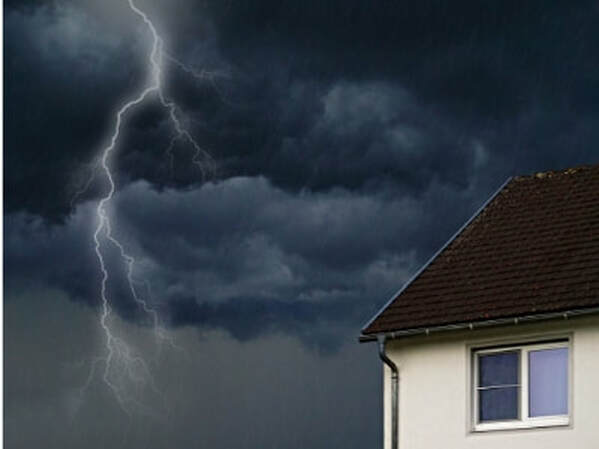 "A few days back, I was cleaning the garage when it started raining cats and dogs, and since I was momentarily stuck there, I noticed my drab-looking garage walls and thought about painting them. My question is, can you actually paint inside the garage when it’s raining?" Under most circumstances, the answer is yes, as long as you are sure your garage walls stay dry despite the rain. Painting in the garage is considered interior painting, and when it comes to interior painting, there aren’t many limitations that can affect the timing of your painting, as opposed to exterior painting where weather can be a huge factor. It may even be a great idea, as the rain will keep the dust outside from flying in and sticking to the paint. However, you may want to do some preparation before painting that garage while it’s raining, or else your painting project might go down the drain. 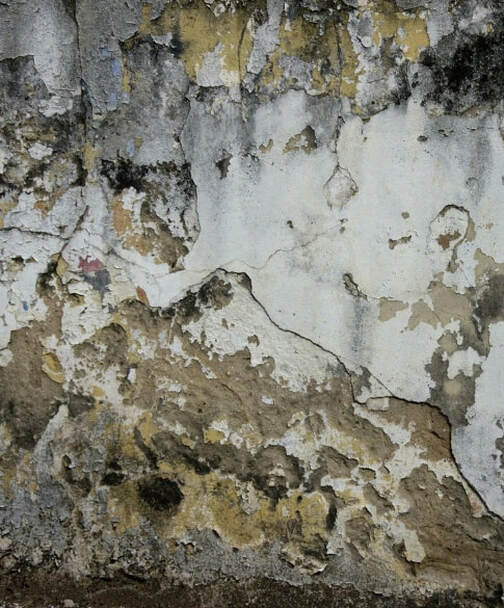 Check Your Garage for Dampness Before Painting Although you will be working indoors, there is no guarantee that your garage walls, floors or door will stay dry all throughout your rainy day painting project. What happens if water seeps in while you’re painting? The most obvious answer is, the water will wash away the paint, or cause it to have unsightly streaks. If you paint on damp walls, the finish could turn out bubbly, cracked, or peeling. Dampness could be caused by a number of factors, though, and it is important to be able to identify what causes damp walls. Below are some of the common causes: 1.Rising Damp Rising damp happens when water from the ground rises and passes through capillaries of buildings or structures. If you find damp patches or stains, peeling paints, powdery white deposits or black mold on your walls, in the areas near the floor, that is most likely because of rising damp. This usually occurs because of how the structures have been built, especially if your house or garage has already been around for a number of years. Rising damp can be prevented by installing a barrier to prevent the water from rising up from the ground. This barrier is called a damp proof course. 2. Condensation If you remember your high school science subject, condensation happens when water in the air, also known as water vapor, turns back into liquid form. This happens when water vapor comes in contact with a colder surface or colder air. Once they clash, the air can no longer hold any more moisture, and water droplets are released. In this case, water droplets are released on the surface of your garage wall, door or ceiling, making it damp or wet. You can expect condensation to happen in the garage when there is high humidity, and you do not have enough ventilation. As a precaution, check the humidity levels before you start painting, and ensure that there is adequate ventilation. Open your windows and vents, and put on those fans if you need to. It also helps to have internal wall insulation to help control the temperature of the air in the wall. 3. Penetrating Damp Penetrating damp happens when water gets in from the outside environment and into your garage, such as is likely to happen when it’s raining if you have poorly maintained structures that have cracks and gaps. Roofs, walls and ceilings are all likely to be affected by penetrating damp. To prevent penetrating damp, apply sealants to any cracks within the rendering or around the windows and doors, replace cracked bricks or repair cracked surfaces, or call an expert to install structures that may prevent water from flowing in. 4. Leaks Leaks are the most common problem when it comes to water seepage. Leaks may be caused by holes in the roof, damaged or missing tiles, or broken drain pipes, among other possible reasons. To address leaks, seal up holes in the roof, and replace damaged tiles or drain pipes. Check your garage beforehand for any of these water problems. If you find any signs of seepage, you may want to fix the problem first before painting your garage. 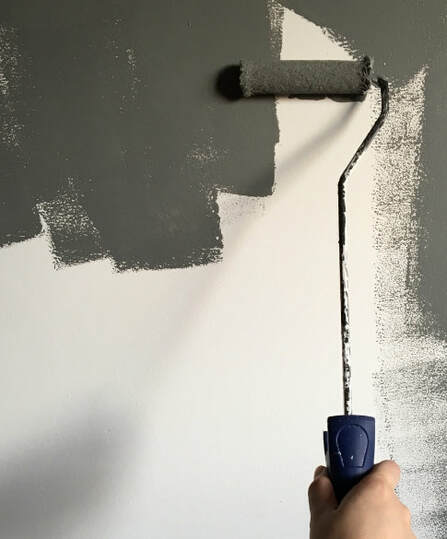 Types of Paint You Can Use for Rainy Days If you’ve checked your garage and are sure you won’t have problems with wet walls, you may want to consider using the following types of paint for your rainy day painting project: 1. Anti-Condensation Paint Anti-condensation paint works by adding an extra layer of insulation, which can reduce dampness of walls and prevent the formation of molds. It is used to reduce the effects of condensation, which forms between warm air and a cold surface. 2. Anti-mold Paint Anti-mold paint contains anti-microbial properties that destroy mold spores and prevent them from growing. They can’t get rid of mold that is already there, but it can stop new molds from sprouting. Anti-mold paints don’t last forever, though. They can last for about five (5) years, and after that the effects wear off. Also, anti-mold paints can’t do anything to address the problem of wet surfaces. 3. Anti-Damp Paint Anti-damp paint works because it has a water-reactive agent mixed into it. Despite its name, is better used after fixing the cause of the damp. They seal off dampness, however this causes the water to be trapped. The effect is having wet structures underneath the paint. If you plan to use this paint, remember that it only works against surface moisture and not dampness from beneath the surface of your structures. Advantages of Painting During a Rainy Day Why would anyone want to paint during a rainy day? It’s cold, it’s dark, and it seems better to curl up in bed with coffee and a good book. Well, here are a few good reasons to do it: 1. You can still be productive even if you can’t go out. Why not make good use of the time you’re stuck indoors by beautifying your garage? 2. You can finish your painting by the time the sun comes out. You’ll have more time to have fun! 3. Rain keeps the dust down. You won’t have to worry about dust and other small bits and pieces of dirt sticking to your newly-painted garage wall- the rain will wash them all away for you. 4. Since there won’t be many professional painting jobs during rainy days, expect rainy day discounts from painting contractors if you decide to hire professionals to do your garage painting. 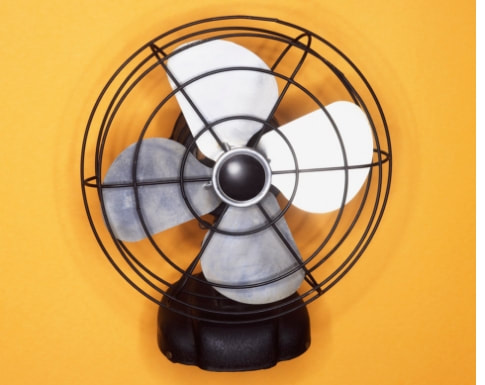 Tips for Painting the Garage on A Rainy Day 1. Use water-based paints. They emit lower levels of chemical vapors and less toxic chemicals overall, so they’re safer to use indoors. 2. Expect that the paint will dry slower during this weather. To increase drying time, you can open doors and windows to allow ventilation, as long as you can be sure the rain won’t come in and wash your paint away. If it’s too wet to open doors and windows, you can use fans and blow heaters instead. 3. Expect to find some molds in the area you want to paint. Remove those molds instead of just painting over them with anti-mold paint. 4. Don’t use oil-based paints. In general, oil-based paints are more difficult to work with. It may be tempting to use in rainy weather since it skims over smoothly and will not get washed out with rain as easily as water-based paints. However, over time, oil-based paints will crack and peel. It is still best to use water-based primer and paint, but even if you do, check the acceptable temperature and moisture conditions for these paints. 5. Apply one coat of your water-based primer, then give it some time to dry. During rainy season, drying time is about three hours. Make sure nothing or nobody touches the painted surface while you’re waiting for it to dry. 6. If the primer is not yet dry after 3 hours, give it an additional two hours to dry. Once dry, you can start painting. 7. If you have an airless sprayer, use it to paint your garage. This makes painting faster, especially if you intend to paint the entire garage, including the walls, door and ceiling, and considering the slower drying time in the rainy weather. 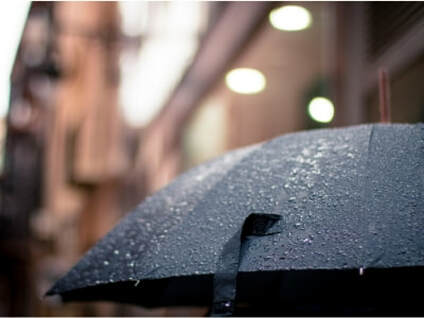 When To Expect a Rainy Day in Your Area If you’re now planning to do your garage painting on a rainy day, take note of the usual rainy season in your area. In the US, the West Coast experiences heavy rainfall from September through May. The North American Monsoon, which affects Arizona, New Mexico, Nevada, Utah, Colorado, West Texas, and California, happens around late June to September. Across Georgia and South Carolina, the rainy season starts late winter, during February or March. Summer is the time of the second heaviest rainfall in Georgia, and the time of maximum rainfall in Florida. Now that you know, you can start planning your garage painting project and make the most out of those rainy days. Painters in Warner Robins, Macon, and adjacent areas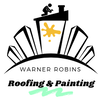 If you need a reputable house painters in Warner Robins, Macon region who understand the needs of their clients look no further contact the experts at Pizzazz Painters Warner Robins. Check us at https://www.pizzazzpainterswarnerrobins.com/ and schedule your appointment for a free painting estimate or call us at 478292-2821. We are here to help!
13 Comments
12/16/2020 02:27:52 am
When it comes to your home or business, your paint job is one of the most important factors that affects the look and feel of your property.
Reply
2/17/2021 05:33:10 am
The amount of time in between paintings is contingent on the type of paint applied and whether or not proper prep work was done. You also have to factor in normal wear and tear. Rooms that are used more often will require painting more frequently.
Reply
8/20/2021 11:01:11 pm
Thanks for pointing out that leaks should be sealed and we should replace damaged tiles or drain pipes to avoid water problems. My husband and I are planning to improve our property before our parents come to visit in September. With this, we are hoping to find paving contractors on Monday who can provide affordable cement rendering services for our concrete walls and floors to avoid serious problems.
Reply
10/21/2021 05:28:26 am
Another reason for the importance of surface prep is that poor or insufficient surface preparation is nearly always the cause of most painting disasters. We're here to save you the headache of having to deal with those problems later. We consulted our resident paint specialist to teach our readers the essentials of surface preparation for new concrete surfaces, whether they're aspiring painters, DIYers, or even professional painters. In general, you want to make sure the surface is smooth, clean, and dry. Let's get into the specifics.
Reply
3/15/2022 06:21:07 pm
prep work is crucial before painting your house. I would recommend getting a damp survey done. When I first bought my house I went straight into painting without a survey and we uncovered thousands of pounds worth of damp issues.
Reply
4/4/2022 01:46:31 am
If you have a hole in your drywall, It needs to be repaired as soon as possible. You can do this yourself by following the steps outlined in this article, or you can hire a professional to do it for you. No matter what you choose to do, make sure the hole is repaired properly so that it will not cause further damage to your home.
Reply
8/4/2022 07:13:43 am
Rising damp is water that seeps up through the framework of a building. You most likely have increasing damp if you see black mold, powdery white mold, stains, or moist patches on your walls. Older buildings that have sunk into the earth experience this. Installing a barrier—also known as a DPC—to block the moisture from rising from the ground will halt this.
Reply
4/7/2023 02:51:51 pm
Once they clash, the air can no longer hold any more moisture, and water droplets are released. In this case, water droplets are released on the surface of your garage wall, door or ceiling, making it damp or wet. Thank you for taking the time to write a great post!
Reply
4/11/2023 11:44:03 pm
I’ll bookmark your blog and share to my friends to explore up in your blog frequently.
Reply
5/23/2023 10:22:25 pm
The blog "Can I Paint Inside the Garage When It's Raining?" provides helpful insights and guidance for individuals who are considering painting their garage during inclement weather. The author effectively addresses the common question of whether it's feasible to paint indoors when it's raining outside. By discussing the potential challenges and considerations, such as ventilation and humidity control, the blog offers practical advice to ensure a successful painting project. It also emphasizes the importance of maintaining a clean and well-prepared workspace. For anyone looking for answers and tips on painting inside the garage during rainy weather, this blog is a valuable resource. Great job in providing clarity and guidance on this topic!
Reply
5/29/2023 09:44:35 pm
By being mindful of weather conditions, particularly the potential for water damage in Houston, you can make informed decisions about painting inside your garage. Waiting for dry conditions, taking precautions, and seeking water damage restoration assistance when needed will help protect your garage from any adverse effects caused by rain or excessive moisture. Painting inside the garage when it's raining can pose risks to the quality of your paint job and potentially lead to water damage. Excessive moisture in the air can interfere with paint adhesion and drying, resulting in a subpar finish. It's important to prioritize dry weather conditions for optimal painting results. Houston's climate is known for its humidity and occasional heavy rainfall. Painting during or immediately after rain can increase the risk of water infiltration into the garage. This can lead to water damage, including issues like mold growth, structural damage, and deterioration of painted surfaces. Preventing water damage is crucial to maintaining the integrity of your garage. It's advisable to wait for a dry period to paint inside the garage. This ensures that the surfaces are free from moisture and that the paint can properly adhere and dry without the risk of water-related issues. Monitor the weather forecast and choose a time when rain is not expected in the near future.If you must paint during a rainy season or if unexpected rain occurs, take necessary precautions to protect the painted surfaces and prevent water damage. Ensure that the garage is properly sealed and consider using tarps or plastic sheeting to cover any vulnerable areas, such as newly painted surfaces or exposed materials.
Reply
1/17/2024 07:49:45 am
Ensure that there is no moisture within your garage prior to starting any painting. The water will naturally wash away the wet paint and result in unsightly streaks if your garage has any leaks and water sneaks in during your paint work. When painting, if the walls are wet, the paint may be frothy and broken, and it may come off easily. Make sure you identify the source of the moisture so you can address it. Rising damp, or water rising from the earth, enters the building through its construction. You most likely have increasing damp if you discover that your wall has stains, moist spots, powdery white mold, or black mold.
Reply
1/26/2024 04:27:19 pm
The most obvious answer is, the water will wash away the paint, or cause it to have unsightly streak. So, NO.
Reply
Leave a Reply. |
CategoriesAuthorPizzazz Painters Warner Robins. I'ts a family owned small business committed to providing quality services guaranteeing the satisfaction of our customers. Archives |
Residential - Commercial Painters and Remodeling in Warner Robins, Georgia
Committed to your complete satisfaction.
Pizzazz Painters Warner Robins
Warner Robins, Macon, Bonaire, Byron, Kathleen, Lizella, Perry, Fort Valley , Hawkinsville, Centerville GA, and adjacent areas.
Counties: Bibb , Houston, Peach, Macon, Crawford
Painters in Warner Robins GA
Painters in Macon GA
Painters in Centerville GA
Painters in Hawkinsville GA
|
Contact
Painters in Warner Robins Georgia
Painting Company in Warner Robins and adjacent areas. 478-292-2821
|
Hours of operation
Monday 9:00 AM to 7:00 PM Tuesday 9:00 AM to 7:00 PM Wednesday 9:00 AM to 7:00 PM Thursday 9:00 AM to 7:00 PM Friday 9:00 AM to 7:00 PM Saturday 9:00 AM to 7:00 PM Sunday 2:00 PM to 5:00 PM |
Privacy Policy and Term Services



 RSS Feed
RSS Feed

